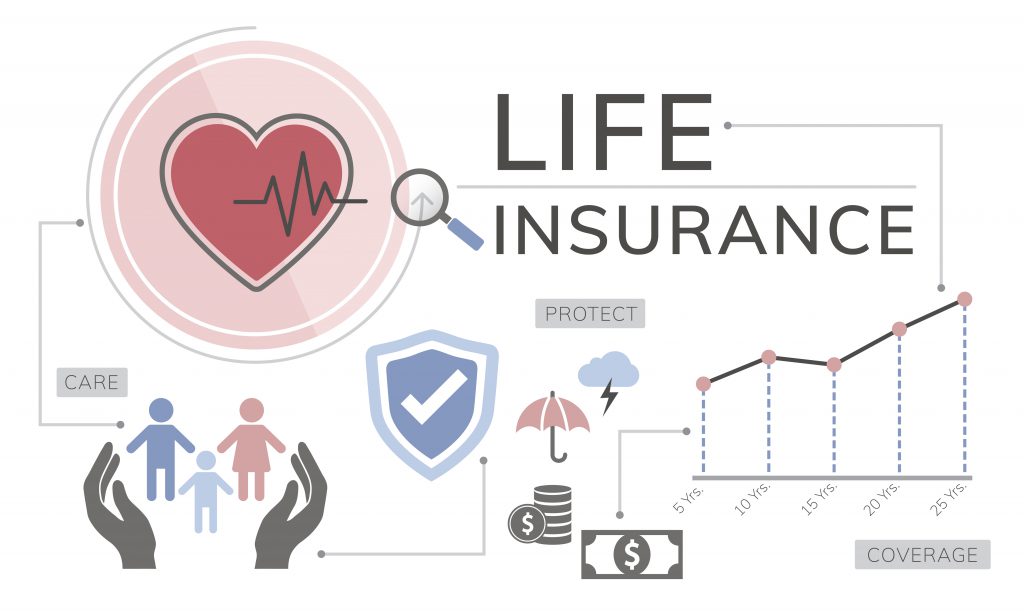Similar to health insurance premiums, life insurance premiums rely on a range of factors that determine how much you need to pay for your life coverage. It is important to fully understand what these factors are. This serves as a path to minimize your premiums in the future.
Table of contents

What are some factors that affect term life insurance premiums?
1. Amount of Life Coverage
A term life insurance policy is the simplest type of life insurance plan that you get and it typically has cheaper premiums than any other kinds of life insurance. It usually provides you with life coverage for a set term between 5 to 40 years up to your age of retirement.
The amount of the death benefit is a key factor. Your life insurance premium will be lower with $500,000 life insurance policy than a $1,000,000 one.
2. Age
As a matter of fact, the younger you are, the less expensive your life insurance premiums will be.
This is simply due to a risk calculation of life insurance. If you are purchasing a 20-year term life insurance plan, the life insurance provider will consider the probability of you staying alive 21 years from now. The younger you are, the longer your lifespan will be, which means less risk for the life insurer to pay you the claim and hence lower premium for you.
This is the reason why some single 20-something individuals make up their mind to purchase a term life insurance policy to lock in a low premium early as a way to save later when they have a family in the future.
3. Gender
As a golden rule, women pay less for life insurance than men because women typically live longer on average than men. This is why ladies are perceived as a lower life insurance risk than men by life insurance companies. Apart from the lifespan, men tend to have more hazardous jobs and higher-risk hobbies such as drinking alcohol and taking drugs or even driving beyond speed limits. It is true that not every gent has a construction-related job and has an alcoholic issue. However, life insurance premiums are calculated based on averages, not individually.
4. Medical history
The healthier you are, the lower your premiums will be. A life insurance policy with the requirement of a medical exam is typically less expensive than the simplified one where no medical exam is needed because in this case the life insurance provider is taking an unidentified risk so premiums are higher accordingly.
You are advised to be open and honest about your medical history by declaring all of your diagnosis, surgery and prescription. If the life insurance company found out that you did not do so, your death benefit would not get approved.
5. Occupation
The more life-threatening your occupation is, the higher your life insurance premium will be. It can end up in a rejection of life coverage if the occupation has a high chance of fatality. If you work as one of the risky occupations such as chemical factory workers, scuba divers, skydivers, car racers, you may pay higher premiums than those who work in a typical office.
6. Hobby
The more life-threatening your hobby is, the higher your life insurance premium will be. If you have hobbies like mountain climbing, skydiving, scuba diving, you may have to pay a higher premium for it.
7. Marital Status
As a couple, if you purchase a joint life insurance policy, you should be mindful that this type the death benefit is only reimbursed on the first death and there is no payout for the death of the second partner. However, there are sometimes discounts for a dual insurance application.

8. Drinking and smoking status
The more heavily you drink or smoke, the higher life insurance premiums will be. This is simply because heavy consumption of alcohol or heavy smoking lead to a higher chance of your demise causing a higher risk for the life insurance companies and hence a higher premium for you.
9. Location
If you live in a country with a high risk that involves war, terrorism or natural disaster, your life insurance premiums will become higher in this regard.
10. Payment schedule
The fewer payments that you are able to make, the lower your life insurance premium will be. If possible, select the option of paying premiums on an annual basis or a quarterly basis to save on your life insurance cost.
Our advice
Always make sure you examine financial and medical conditions whether they are in line with the level of coverage on your current life insurance policy, otherwise switch it to the one that perfectly matches your specific life coverage requirements and those of your loved ones. After all, it is never too late to plan for saving on your life insurance premium you deserve.


